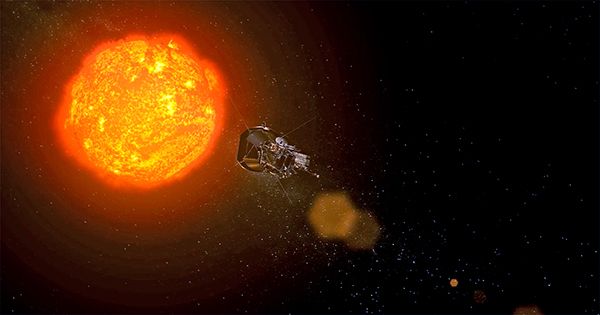Infrared imaging of the Sun exposes the ever-changing structure of the solar corona, the Sun’s upper atmosphere. Thanks to recent data from Solar Orbiter, this picture is now available in ultra-high definition. Solar Orbiter took an image with about 83 million pixels in a 9148 x 9112-pixel grid from a distance of 75 million kilometers — nearly halfway between the Earth’s orbit and the Sun. That’s ten times the resolution of a 4K TV screen display.
The spacecraft took more than four hours to capture the photograph with the Extreme Ultraviolet Imager (EUI). The SPICE instrument was analyzing the different constituent components of the solar atmosphere, from the chromosphere to the corona, at the same time as the EUI observations. The temperatures of these layers vary, and ultraviolet light is emitted by various excited atoms.
Purple represents hydrogen gas at 10,000°C (18,032°F), blue represents carbon at 32,000°C (57,632°F), green represents oxygen at 320,000°C (576,032°F), and yellow represents neon at 630,000°C (1,134,032°F) in the combined animation. The observations were place on March 7th. The European Space Agency and NASA have collaborated on the Solar Orbiter project.
“And this is only the beginning; in the next years, the spacecraft will go even closer to the Sun. It will also progressively change its attitude in order to monitor the Sun’s hitherto unseen Polar Regions “According to the ESA. As it prepares for its closest approach to the Sun on March 26, the European Solar Orbiter is presently inside Mercury’s orbit. The mission will investigate the solar wind, a continuous stream of particles that impacts the atmosphere in space. The Solar Orbiter will be less than one-third of the distance between the Sun and the Earth when it reaches at its current location on March 26.
At a wavelength of 17 nanometers, EUI photographs the Sun in the extreme ultraviolet part of the electromagnetic spectrum. The corona, the Sun’s top atmosphere, which has a temperature of roughly a million degrees Celsius, is revealed in this way. Dark filaments may be seen protruding away from the Sun’s surface at the 2 o’clock (near the picture of the Earth for scale) and 8 o’clock locations. These ‘prominences’ have a tendency to explode, releasing massive amounts of coronal gas into space and causing’space weather’ events.
During the trip, the SPICE instrument was also capturing data in addition to EUI. These, too, had to be put together like a mosaic. SPICE is meant to follow the layers of the Sun’s atmosphere, from the corona to the chromosphere, as it approaches the surface. The gadget accomplishes this by analyzing the distinct wavelengths of extreme ultraviolet light emitted by various atoms.
Purple corresponds to hydrogen gas at a temperature of 10 000°C, blue to carbon at 32 000°C, green to oxygen at 320 000°C, and yellow to neon at 630 000°C in the SPICE series of pictures. This will allow solar physicists to follow the corona’s extremely intense explosions all the way down to the lowest atmospheric layers. It will also allow them to investigate one of the most perplexing aspects of the Sun: how the temperature rises as the atmosphere layers increase.
When you move away from a hot object, the temperature usually declines. The corona, however, reaches a million degrees Celsius above the Sun, but the Earth is only approximately 5000 degrees Celsius. One of Solar Orbiter’s primary scientific goals is to solve this puzzle. The photographs were collected on March 7, exactly when Solar Orbiter passed the Sun-Earth line, allowing them to be cross-calibrated and compared to Earth-bound solar equipment. In the future, this will make it simpler to compare findings from various equipment and observatories.
Solar Orbiter will accomplish another mission milestone on March 26: its first close perihelion. The spacecraft is currently inside Mercury’s orbit, obtaining the greatest resolution photographs of the Sun it is capable of. It also collects information on the solar wind, which is a stream of particles that blows outwards from the Sun. And this is only the beginning; in the next years, the spacecraft will go even closer to the Sun. It will also gradually raise its orientation to observe the Sun’s Polar Regions, which have previously been unseen.















